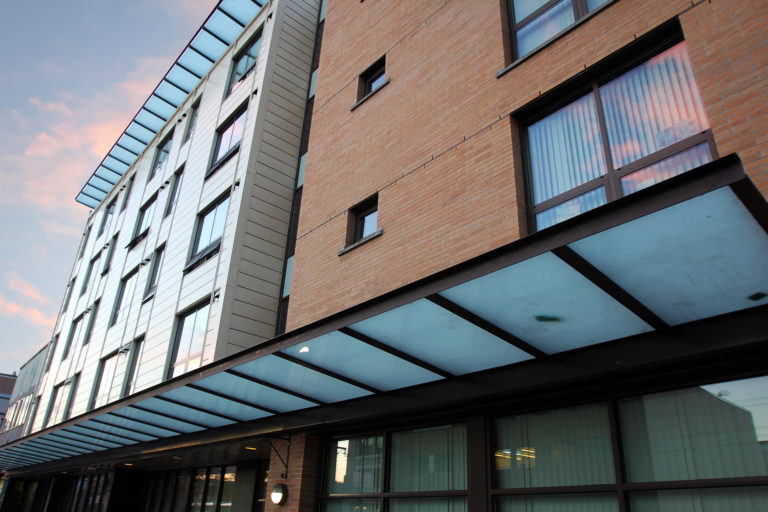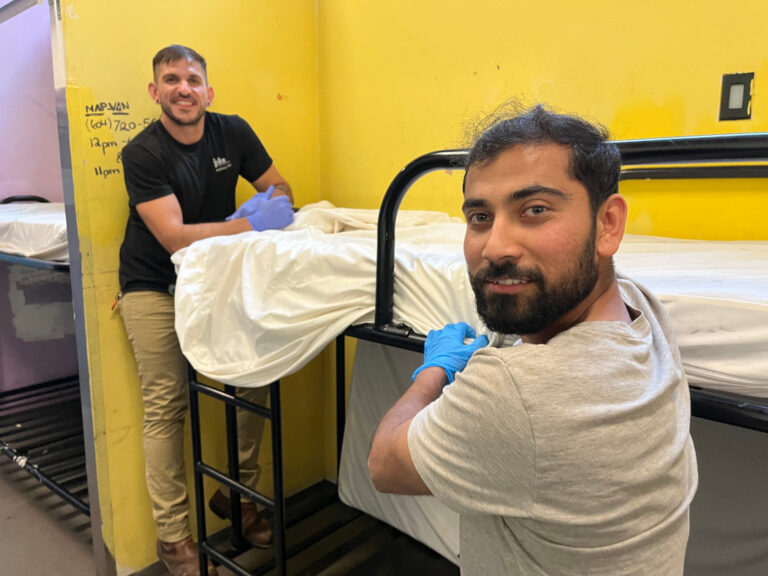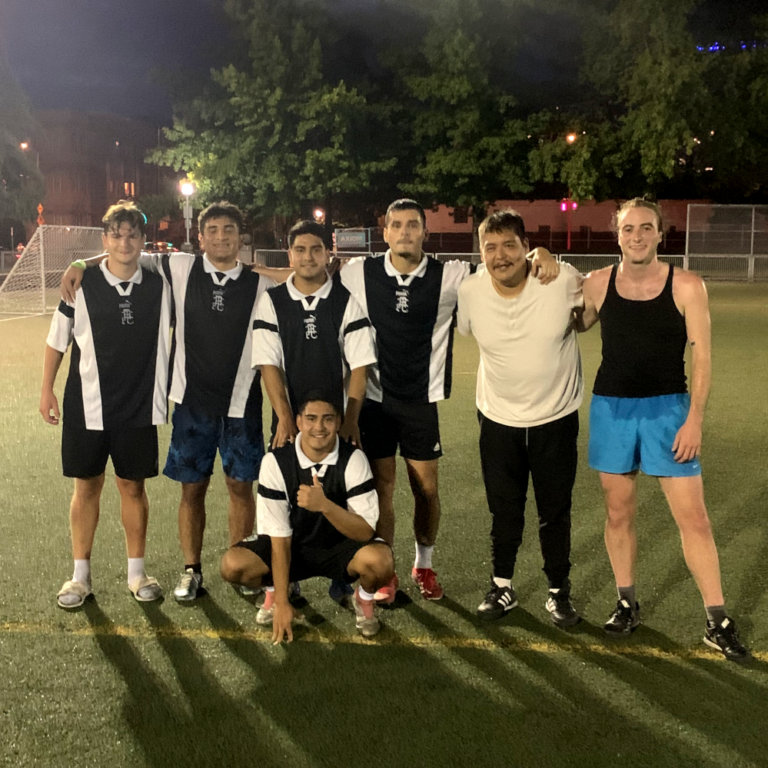PHS Community Services Society opened two new housing developments in late 2023.
There was 80-unit Stanley in the Downtown Eastside and in Victoria the purpose-built Juniper, with 46 units.
It takes years to fund, build and equip new developments, which can be a frustrating wait for everyone. But the end result is the long-awaited day when people move into their new homes.
Amy Widmer, PHS Sheltering and Outreach Project Operations Manager, was part of the process. She helped five men, aged between 40 and 60, transfer from our New Fountain Shelter to the Stanley, which opened shortly before Christmas.
“When you move people into housing, naturally enough their most common reaction is overwhelming joy,” she said. “One person, when the door opened, started sobbing and said ‘This is for me? This is mine?’”
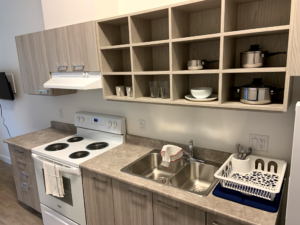 Some people who have moved into newly available units have been without a home for years. Something as simple as a kitchen area is incredibly meaningful.
Some people who have moved into newly available units have been without a home for years. Something as simple as a kitchen area is incredibly meaningful.
“People have been dreaming for months and years about the day they get housing,” she said. “Everybody has something different they think they’ll be doing to celebrate, but they mostly fall asleep because they are at last in a quiet space with a lock on the door.”
It’s a telling reaction. People alternating between shelters and the streets are chronically sleep-deprived.
For new residents, even with all the joy of their new homes, there are emotional transitions.
There can be a bonding among people living on the streets and in shelters, based on shared trauma.
“They’ve been used to having people around them all the time,” said Amy. “We find that quite often, people call in back at the shelter to visit people they have been close to. There can be a kind of a family dynamic in shelters.”
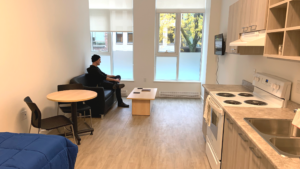 In addition to those connections, there is now also new community forming among the residents of these new buildings.
In addition to those connections, there is now also new community forming among the residents of these new buildings.
PHS Senior Housing Manager Jesús Lozano-Villarreal explained the dynamic this way: “Many people assume that ‘home’ is community. But in my experience, before building community, people first need to experience home as security.
“You need a safe place, a sense of belonging. Because of their trauma, our residents can often struggle with trust and it can take a while to build relationships, but when people feel safe, they can feel part of a community.
“It takes time to build community. We have to realize how many times systems have failed them.”
The new communities being built at The Stanley and The Juniper are based on months of patient, behind-the-scenes work that made the move-in as smooth as possible and set up residents for success.
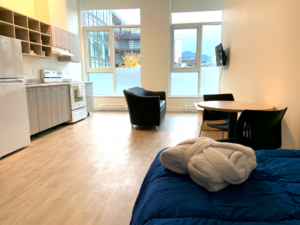 “We were working with people staying at Mt. Tolmie for months, getting residents ready for the move and working on their expectations,” said Jesús.
“We were working with people staying at Mt. Tolmie for months, getting residents ready for the move and working on their expectations,” said Jesús.
“PHS staff needed to prepare the new place so it didn’t feel clinical. We put décor on the walls so it didn’t feel institutional. These things count. It’s about belonging”
Although moving from the Mt. Tolmie shelter to the new units at the Juniper took only three days, it was a move that was three years in the making. Some of the people who have just found new homes at the Juniper have been sheltering with PHS since early 2021 when we were operating the Save-on Food Memorial Centre Arena as a temporary shelter.
Of this group, Jesus said, “They’ve been through a global pandemic together, lived in a hockey arena, and been in a small hospital repurposed for shelter in a very residential area in Saanich. It’s been quite a journey to home.”
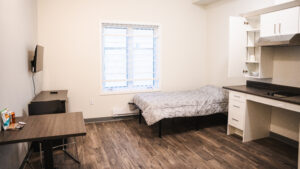 And home in this case is more than just a space to call your own. In these supportive housing units, home includes meals and help with taking medications and a way for healthcare workers to keep in touch for ongoing care.
And home in this case is more than just a space to call your own. In these supportive housing units, home includes meals and help with taking medications and a way for healthcare workers to keep in touch for ongoing care.
Homelessness is a public health crisis. In B.C., homelessness cuts people’s life expectancy in half.
The availability of sheltering is essential. But shelter is not housing. Whether it via shelters or directly from street homelessness, we need to bring in more people from the cold.
- Learn more about innovative PHS programs and our supportive housing in Vancouver and Victoria, B.C.
- Donate to continue innovative projects like these.

